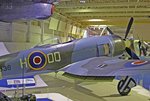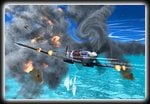drgondog
Major
OT still, but you will love that! I got to see her in action and it was simply amazing. One of the most beautiful things I have seen.
LOL- If ever the phrase "beauty is in the eye of the beholder" was so true - it depends on your perspective if you happen to be the focus of 'attention'.. I saw the AC-47 and the early AC-130 in action - simply awesome




